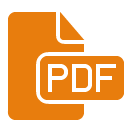Question
Recommendations
![]()
- Healthcare professionals must explain to the patient (according to their level of development), and family, the benefits, risks, and possible associated distress of the treatment options (palliative radiotherapy, palliative chemotherapy, or supportive care), in an honest, simple, approachable, accessible, and coherent way, using all relevant information so that they can participate in the decision. In addition to active listening and appropriate silence, in order to be aware of their needs at all times.
- Healthcare professionals should reinforce information about the PPC patient’s prognosis and the treatment options available at each stage of the disease, tailored to the individual needs of the patient and family, with the aim of creating realistic expectations.
For aspects related to communication and treatment decision-making processes, it is suggested to refer to the recommendations in Chapters Child participation in decision-making and end-of-life care and Communication with the patient and family of the guidelines.
![]()
- In the management of symptoms in PPC, an individualised assessment is suggested to diagnose and, if possible, treat the specific causes. In paediatric patients with advanced cancer in palliative care, the use of palliative radiotherapy should be considered on a case-by-case basis, depending on the location and type of tumor.
Rationale
The CDG believes that palliative RT can be integrated into the end-of-life care process for children and adolescents with incurable cancer. Although the evidence is of very low quality, all series show that palliative RT improves symptoms in most patients, without significant toxicity.
The CDG has decided not to make a recommendation on palliative QT based on the evidence identified. Further studies are needed on the effectiveness and safety of its use in the paediatric age group.
Finally, general practical considerations were made about the need to clarify the goal of treatment with the patient and family in order to avoid, as far as possible, unrealistic expectations leading to unnecessary treatment.
Complete clinical question
Full information on this question (available in Spanish), see:
http://portal.guiasalud.es/guia-en-capas/cuidados-paliativos-pediatria/#question-2
References
30. McCulloch,R, Berde C. Difficult pain. Adjuvants or co-analgesics. En: Oxford Textbook of Palliative Medicine 3. Hain R, Goldman A, ed. 2021, p. 188-201.
31. Stachelek GC, Terezakis SA, Ermoian R. Palliative radiation oncology in pediatric patients. Ann Palliat Med. 2019;8(3):285-92. https://doi.org/10.21037/apm.2019.05.01
32. Murphy JD, Nelson LM, Chang DT, Mell LK, Le QT. Patterns of care in palliative radiotherapy: a population-based study. J Oncol Pract. 2013;9(5):e220-7. https://doi.org/10.1200/jop.2012.000835.
33. Rao AD, Chen Q, Ermoian RP, Alcorn SR, Figueiredo MLS, Chen MJ, et al. Practice patterns of palliative radiation therapy in pediatric oncology patients in an international pediatric research consortium. Pediatr Blood Cancer. 2017;64(11). https://doi.org/10.1002/pbc.26589.
34. Rao AD, Figueiredo MLS, Yegya-Raman N, Sehgal S, Chen Q, Alcorn SR, et al. Clinical practice and outcomes of palliative radiation therapy in pediatric oncology patients: An international comparison of experiences from two distinct countries and health care systems. Radiother Oncol. 2019;140:1-5. https://doi.org/10.1016/j.radonc.2019.05.017.
35. Chen EL, Yoo CH, Gutkin PM, Merriott DJ, Avedian RS, Steffner RJ, et al. Outcomes for pediatric patients with osteosarcoma treated with palliative radiotherapy. Pediatr Blood Cancer. 2020;67(1):e27967. https://doi.org/10.1002/pbc.27967.
36. Mak KS, Lee SW, Balboni TA, Marcus KJ. Clinical outcomes and toxicity following palliative radiotherapy for childhood cancers. Pediatr Blood Cancer. 2018;65(1). https://doi.org/10.1002/pbc.26764.
37. Lazarev S, Kushner BH, Wolden SL. Short Hypofractionated Radiation Therapy in Palliation of Pediatric Malignancies: Outcomes and Toxicities. Int J Radiat Oncol Biol Phys. 2018;102(5):1457-64. https://doi.org/10.1016/j.ijrobp.2018.07.2012.
38. Varma S, Friedman DL, Stavas MJ. The role of radiation therapy in palliative care of children with advanced cancer: Clinical outcomes and patterns of care. Pediatr Blood Cancer. 2017;64(5). https://doi.org/10.1002/pbc.26359
39. Rahn DA, Mundt AJ, Murphy JD, Schiff D, Adams J, Murphy KT. Clinical outcomes of palliative radiation therapy for children. Pract Radiat Oncol. 2015;5(3):183-7. https://doi.org/10.1016/j.prro.2014.08.015.
40. Caussa L, Hijal T, Michon J, Helfre S. Role of palliative radiotherapy in the management of metastatic pediatric neuroblastoma: a retrospective single-institution study. Int J Radiat Oncol Biol Phys. 2011;79(1):214-9. https://doi.org/10.1016/j.ijrobp.2009.10.031.
41. Pramanik R, Agarwala S, Gupta YK, Thulkar S, Vishnubhatla S, Batra A, et al. Metronomic Chemotherapy vs Best Supportive Care in Progressive Pediatric Solid Malignant Tumors: A Randomiz Clinical Trial. JAMA Oncol. 2017;3(9):1222-7. https://doi.org/10.1001/jamaoncol.2017.0324.
42. Porkholm M, Toiviainen-Salo S, Seuri R, Lönnqvist T, Vepsäläinen K, Saarinen-Pihkala UM, et al. Metronomic therapy can increase quality of life during paediatric palliative cancer care, but careful patient selection is essential. Acta Paediatr. 2016;105(8):946-51. https://doi.org/10.1111/apa.13338.
43. Cazzaniga ME, Biganzoli L, Cortesi L, De Placido S, Donadio M, Fabi A, Ferro A, Generali D, Lorusso V, Milani A, Montagna E, Munzone E, Orlando L, Pizzuti L, Simoncini E, Zamagni C, Pappagallo GL; Metronomic Chemotherapy in Advanced Breast Cancer Study Group. Treating advanced breast cancer with metronomic chemotherapy: what is known, what is new and what is the future? Onco Targets Ther. 2019 Apr 23;12:2989-2997.
44. Karnofsky DA, Burchenal JH. The clinical evaluation of chemotherapeutics in cancer. En: MacLeod CM, ed. Evaluation of Chemotherapeutic Agents. Columbia University Press: New York, 1949, pp 191-205.
45. Lansky SB, List MA, Lansky LL, Ritter-Sterr C, Miller DR. The measurement of performance in childhood cancer patients. Cancer. 1987 Oct 1;60(7):1651-6.
46. Sociedad Española de Hematología y Oncología Pediátricas. Centros informantes del RETI-SEHOP [Internet]. [citado mayo 2022]. Disponible en: https://www.uv.es/rnti/pdfs/Listado%20CI.pdf
47. Lee BKY, Apkon D, Wolfe J, Marcus KJ. Palliative Radiation Therapy for Pediatric Patients: Parental Perceptions. International Journal of Radiation Oncology, Biology, Physics. 2017;99(2):S86. https://doi.org/10.1016/j.ijrobp.2017.06.208.
48. Tomlinson D, Bartels U, Gammon J, Hinds PS, Volpe J, Bouffet E, et al. Chemotherapy versus supportive care alone in pediatric palliative care for cancer: comparing the preferences of parents and health care professionals. CMAJ. 2011;183(17):E1252-8. https://doi.org/10.1503/cmaj.110392.






